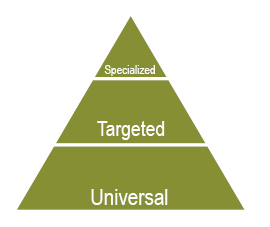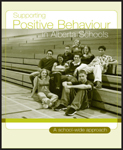Bussing
Being able to maintain appropriate behaviour on the bus allows students to be more independent and creates opportunities for positive interactions with others.
|
Choose the statement below that best describes how this student manages bussing.

|

|
Universal Supports benefit all students
|
|

|
Targeted Supports benefit students with more specific needs
|
 Parents know their children well and can offer insights on how to support their social and emotional well-being. There is strength in collaborating on strategies that could be used at home, at school and in the community.  |

|
Specialized Supports benefit the small number of students with sensory, physical, cognitive or behavioural needs that require intensive, individualized interventions
|


